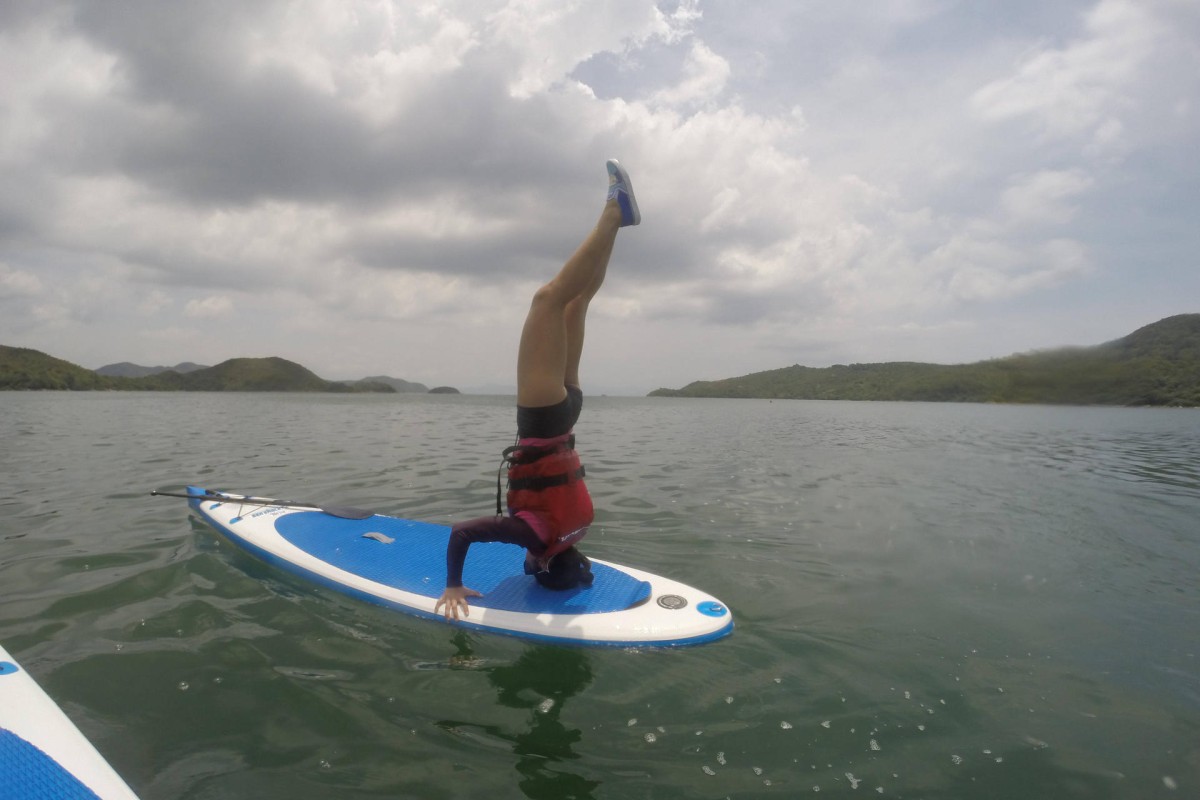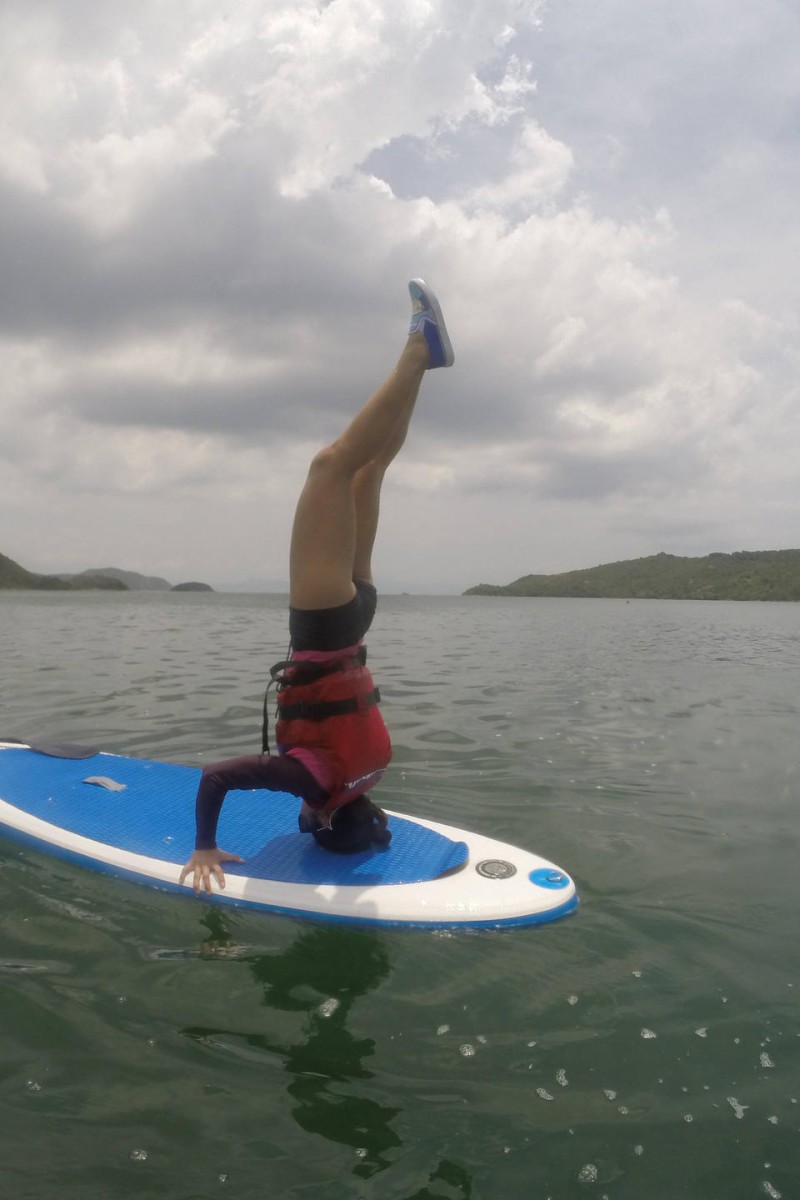 Reporter Melanie Leung is confident enough to do a headstand while balancing on a stand-up paddleboard
Reporter Melanie Leung is confident enough to do a headstand while balancing on a stand-up paddleboardWater sports have never been my thing. I don't have the best track record: I once kayaked down a river, but missed where I was supposed to stop, and ended up paddling for eight hours.
Another time, I joined a two-day kayaking trip in the Gulf of Mexico and was always the last one to arrive at the end.
That's why I've taken up climbing - solid rock, everything under control, no waves to toss me about.
But life's about challenging yourself, so I decided to try stand-up paddleboarding at the Hoi Ha Wan Marine Park for our Going Wild series.
The activity was on a Friday, so I figured I'd have the weekend to recover.
After I had put on a buoyancy aid and strapped on an action camera, my instructor Jaymz from Dragonfly introduced me to our gear.
At 3.5 metres long, 15 centimetres thick and 75 centimetres wide, the large, inflatable paddle board weighs 10kg.
The deck has a rubber covering to stop you slipping, and there's a slot underneath where a fin can be inserted to help keep the board in a straight line by cutting through the water.
The most dangerous part is the pointy tip, also known as the nose. It's made of hard plastic, so you wouldn't want to hit your head on it if you fell.
The paddle, which is similar to a canoe's, should be about 15cm taller than you, with the bottom of the blade curving towards you for maximum propulsion.
Before we could do any stand-up paddling, we had to get to deeper waters and steer clear of the rocks so we wouldn't get hurt if we fell.
To keep things streamlined and get to the point as efficiently as possible, we lay face-down on the board and paddled with our arms - like an awkward penguin.
Once we were far enough out to sea, it was safe to stand up.
I learned how to use the paddle for support and get on my knees first, before standing up slowly, one foot at a time. Easy peasy. I practised several times, and soon I was able to stand up without the help of the paddle.
Paddling was another matter, though. I'd barely made my first stroke when I lost my balance and fell into the sea. Falling is normal, but what's important is remembering to get yourself back to the board before you look for the paddle.
There are two ways to get back up: the first is what Jaymz calls the "sea lion".
You hoist your belly on to the board, and then flop your way back to the centre by pushing with both hands.
I prefer the second way, which is a lot quicker. You simply grab the handle on the deck, and pull yourself up from the side.
After I found my balance again, Jaymz taught me several paddling techniques that we practised around buoys.
The trick is making sure the blade stays close to the board, and then pulling the paddle out of the water once it reaches your feet. Keeping the blade in the water past your feet would only be a waste of energy.
Moving backwards is done by reversing the direction of the stroke. The board is steered by paddling outwards from the nose or tail.
Jaymz also demonstrated how to paddle sideways by doing a figure eight while keeping the paddle vertical.
My favourite was the buoy turn. By standing at the very end of the board and paddling outwards, I could spin very quickly (though naturally, I fell into the water again).
Compared to my previous strenuous kayaking expeditions, stand-up paddleboarding was a lot more enjoyable. The wind and waves weren't strong so I was able to cruise with ease and enjoy the beautiful view.
We also had fun doing burpees, headstands and flips on the board.
When he leads a group, Jaymz said he gets everyone to arrange the boards in a circle pointing inwards and challenges them to run around without falling in.
The wind was beginning to pick up, so we reluctantly headed back to shore.
I never dreamed the toughest part of the day would be leaving!
Don't forget to check out the other stories from our Going Wild series!
